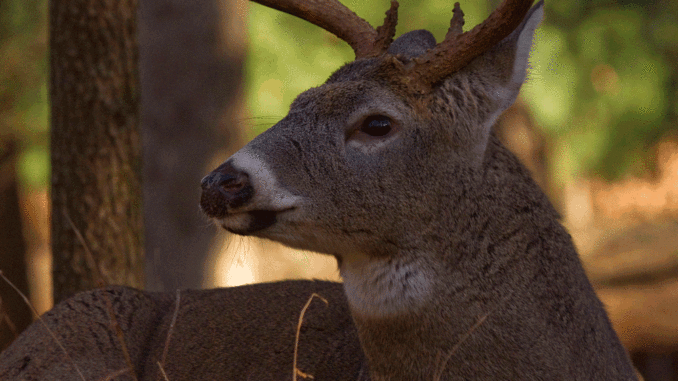
Discovering deer sign, moving stands and opening or extending shooting lanes can tilt the odds in your favor.
It wasn’t your normal stroll through the winter woods, but as in years past, the walk had a purpose. We were looking for something, and if necessary, we would walk the entire property to find it.
For at least a decade, this mid-winter stroll has marked the beginning of our deer hunting. Even though the season was nine months away, our hunting had begun in earnest. While many hunters are sitting by a fire, anxiously waiting for the winter to fade into spring and marking opening day on their calendars, others are out getting all of the knowledge the woods affords them.
For many of the most-successful hunters, deer season is a year-round practice. Dan Perez co-owner of Whitetail Properties, a real-estate company specializing in recreational land, said that February is his most-productive time to prepare for the next season.
“As soon as the season is over, I begin planning for the next season.” he said. “February is when I move all of my stands and do most of my scouting. When the woods are barren, it’s easier to find sign of bucks that may have given us the slip the previous season.”
Many hunters agree that when hunting big, mature whitetails, it takes a different mentality, a different approach that more often than not requires a commitment to scouting that is a year-round approach — and there is no better time to scout than right now, for many reasons.
First, with the hunting season just ending, our memories are fresh. All of the mistakes we made and missed opportunities are clear in our minds. These lessons learned can be applied now while it’s all fresh.
Chad Simpson a dedicated deer hunter from Hendersonville, N.C., said he takes extensive notes during the season on all of his hunts.
“Before I forget the little details, I like to get out there right after the season to begin my preparations for the next hunting season,” Simpson said. “I’ll begin by making any adjustments to stands I know I need to make. This may be (from) moving some stands a few yards to completely removing it from the area and relocating it to a new area entirely.”
Simpson relocated a stand to an area he scouted after the 2011 season had ended, a place where he saw some promising sign. The first afternoon he hunted the stand, he connected on a nice mature buck.
“Now is when I like to walk the property. I know it will be a long time before I hunt, so I am not as worried about spooking deer,” he said. “But I want to see where they are and learn how they have given me the slip.”
Simpson will look at the areas he’s hunted, but he will spend most of his time scouting new areas of the same property. Big bucks all have a core area where they spend most of their waking hours, and by scouting and finding these areas, it increases your chance of getting a shot when the season comes around.
“By hanging a stand near a core area now, I will ensure the buck will have most likely forgotten about it when the season comes around,” he said. “And I will not go back to that stand until I am ready to hunt that stand.”
Of all the times to find big buck sign, the winter is tops. The middle of winter is when the woods are full of sign — and it’s the easiest times to see the sign. It’s easier to find rubs, old scrapes and trails before trees begin to leaf out again in the spring.
“If I wait too long, I am doing two things wrong,” Perez said. “First, I may forget some of the lessons I learned from this buck if I wait until the summer before I make my adjustments. By doing it right after the season, I know that I am making the best move that will help me next season.”
It’s hard to argue with this sentiment. By getting out there and walking your property, you can find things that are not as obvious when scouting right before the season starts. Edges are more defined, trails more noticeable and rubs are fresh and often easier to spot.
“The first thing I am looking for are big rubs, but not just one rub here and one there — I am looking for rub lines,” said Simpson, who estimates that he spends three days scouting for every day he hunts, making the most of his hunting opportunities by increasing his chances for success.
Simpson begins by walking along the hard edges. Studies by the Quality Deer Management Association point out that most rubs will occur within 20 yards of an edge. With deer traveling along the edges, the rubs will parallel these edges. Once a hard edge is found with a series of rubs, the next step is finding a tree to hang a stand. Bucks indicate their travel routes by rub lines. By finding these rub lines, hunters can focus on these areas and increase their chances of connecting next season on that trophy buck.
One thing to notice when looking at rubs is scarring. Bucks have a tendency to rub the same trees year after year. A rub on a tree with several years of scarring points to a mature buck, a trophy on which to focus your efforts. Bigger trees usually mean bigger bucks, and big trees with scarring usually means an older deer.
When looking for rubs, pay attention to the topography of the land. Open, winter woods allow hunters to notice the lay of the land better than at any other time and take note of the topography and how the deer are traveling the rub lines. By combining these elements, you are lining up as many things as possible in your favor, and when hunting a big buck, the more you can tip the scales, the better your odds. All that’s left is selecting the perfect ambush location.
A few years ago, while doing some post-season scouting, I discovered a travel corridor 60 yards from an existing stand that, because of the vegetation, couldn’t be seen. It was loaded with rubs, and moving the stand a few dozen yards has made a huge difference; we are seeing more and bigger deer from this new location.
Perez said that after he repositions and hangs all his stands in the winter, he turns to trimming shooting lanes. With the woods open, it’s easier to find the best lanes to trim and open up.
“Rather than waiting until too close to the season, I like to trim any shooting lanes in the winter,” he said, explaining that by opening the lanes a bit bigger than normal while leaves are down, he allows for new growth to come in and still have a clear lane.
Working in the winter also allows hunters to open new lanes around existing stands and extend or widen them.
“A common mistake hunters make is trimming lanes right before the season, but all of this intrusion just prior to the season will alarm mature bucks,” he said, explaining that work in January and February allows the woods to return to normal over the spring and summer.
Deer hunters are a passionate lot. Many live and breathe the sport; others are a bit more passive. All will agree that few things cause the excitement that a big buck brings. By doing a bit of work now, you are stacking the deck in your favor and giving yourself the best possible odds of getting that deer you dream about. Enjoy the time in the woods, spend it scouting and looking for that buck for next hunting season. The satisfaction of killing that big buck with work done months before makes it all worthwhile.

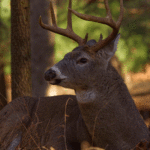
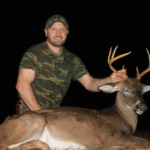
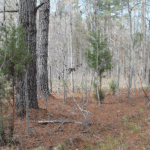
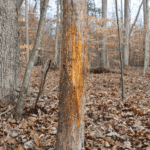


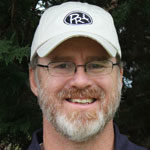
Be the first to comment